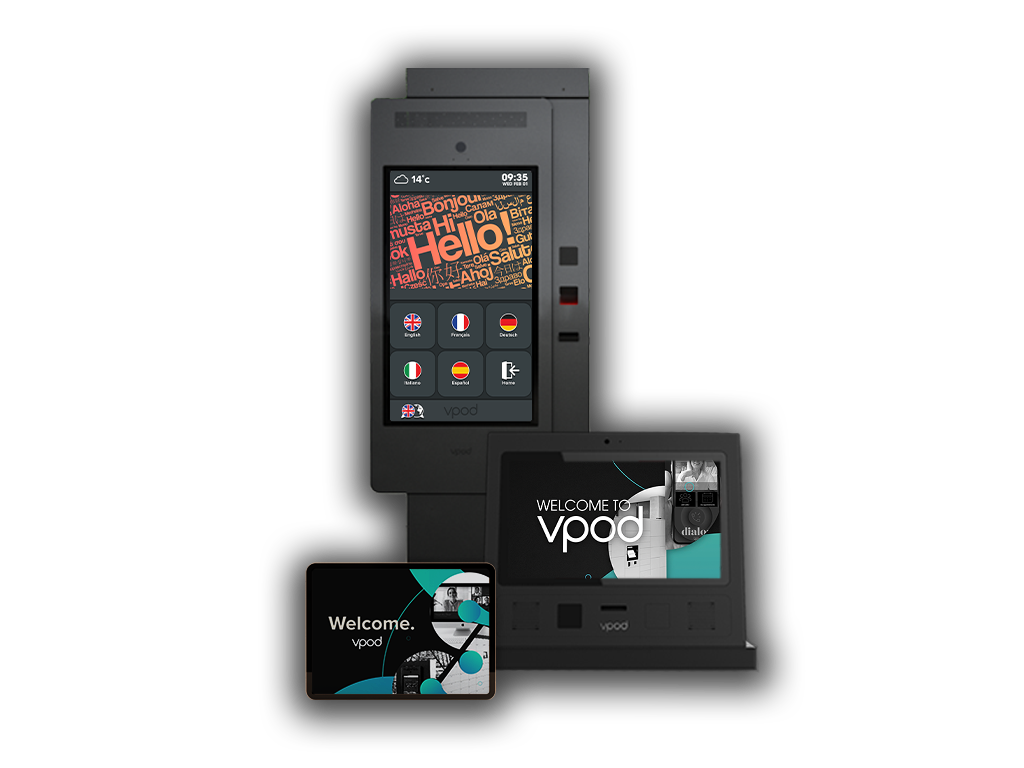A Comprehensive Handbook of Visitor Management Systems
Just starting to learn visitor management
Internet technology has continued to evolve faster and faster throughout the 21st century, and COVID-19 drove an even faster adoption of automation for business. The adoption of Visitor Management Solutions in particular has increased during the pandemic.
This guide will introduce visitor management from both micro and macro perspectives, including some of our thought-provoking key terms within visitor management to help readers understand our unique approach to cutting costs while improving workplace safety, productivity, efficiency, and visitor experience.
The guide is split into two sections to give the most comprehensive information related to the visitor management journey and how to implement the best possible solutions.
or
What is visitor management? A Definition
Visitor Management is one task related to facility management that involves; tracking the usage of a public building or site, managing visitors’ arrival, and ensuring they have a great experience when they are at your locations. Visitor Management usually involves a multitude of processes that help keep visitors and employees safe, secure, and in the correct place.
Visitor Management is relevant in many industries, including commercial, retail, hospitality, tourism, finance, manufacturing, and education.

What types of visitors go to offices?
Visitors include employees from different departments, contractors, temporary workers, clients, vendors, and the general public. Each group of visitors has unique access requirements to the premises. For instance, employees may enjoy unrestricted access, whereas vendors might only need entry to specific designated areas. Categorising visitors enables the identification of their access privileges based on their roles, ensuring that only authorised individuals can enter restricted zones. Examples of office visitors fall into three broad camps that include different subgroups amongst them:
Temporary employees & Hybrid workers
Hybrid workers and visiting Remote workers should have the same simple process that regular office employees have where access permissions are appropriately granted based on each person’s job functions and responsibilities.
External Visitors
These types of visitors are anyone who does not work directly for your organisation. This would include business partners and visiting employees who come to attend meetings in your buildings, prospective new hires arriving for interviews, clients & customers, delivery drivers, and employees’ friends and family swinging by.
Contractors
These visitors are workers who are hired to do work at your building, either on a temporary or regular basis. This would include contractors and sub-contractors like builders, electricians, carpenters, consultants, cleaners, and all types of workers who are hired to work for the company, rather than in the company.
Modern workplaces use effective Visitor Management Tools to enhance building security and the visitor experience. Providing a high-quality overview of all types of visitors, the system gives each of them the appropriate levels of access permissions, reducing the risk of unauthorised access to keep employees and assets safe.
Why is visitor management important?
Visitor management is vital to ensure that the workplace is safe and upholds compliance while delivering an outstanding experience for every person on site. It’s undoubtedly better to have a simple system than no system at all; however, the traditional process of managing and tracking visitors through manually collecting and storing visitors’ data, usually with a paper-based visitor sign-in book, could put corporations at a higher risk of security breaches while losing efficiency and productivity.
Is visitor management relevant to my industry?
Visitor Management is relevant in any industry that needs to be able to manage who comes and goes at their physical locations. Amongst others, these include commercial, campus, retail, healthcare & hospitality, tourism, finance, manufacturing, and education. Here is a wide range of examples for you can take a look at:
- Banking: Multinational global bank
- Facilities Management: Sodexo, Mitie, Ricoh
- Real estate: CBRE
- Convention Centres for contractor management: Javits Center NYC
- Telecom: Vodafone
What do I need to be aware of while managing visitors?
To figure out the best approach for your business, the common problems and challenges you need to be aware of are GDPR compliance, inefficiency, and the high administrative cost involved at your reception area.
1. Avoid breaching GDPR
GDPR was drafted by the European Union and introduced in 2018. The regulation relates to any organisation that stores and processes data of any person from the EU – yes, even if the country you operate in is not part of the EU.
GDPR is a regulation that strengthens individuals’ rights while ensuring the free flow of data in the digital market. The regulation amps up the importance of concepts such as visitor consent, data storage methods, deletion period, and more.
Any personal data of people in the EU, such as names, addresses, date of birth, purchases, and bank details, must now be stored in a certain way and erased within a specific time frame. Visitor data is commonly collected to maintain the building’s security and deliver a better visitor experience.
Whatever the purpose is, the manual process of collecting, managing, and erasing data in accordance with regulations requires proper techniques if it is all to be handled manually. This might increase security risks from a single point of failure in the process.
Read more about how Visitor Management Systems can help you stay GDPR compliant
2. The hidden problems and challenges involved
Are you dealing with unpredictable visitor traffic, and increasing headcount to cover times of peak traffic? The number of visitors, deliveries, contractors, and hybrid workers can be hard to predict – leading to an over-staffed or understaffed reception area.
Whether you have a physical visitor book or a traditional electronic visitor management system that uses a web-based network to monitor and record visitor information, businesses often run into the following challenges, including many Front of House service providers:
- Manual processes at the reception desk lead to high administrative costs.
- High compliance risks lead to fines and damaging your brand reputation.
- Unnecessary manual tasks as a result of the visitor management system being isolated from other siloed building systems.
- An inconsistent Visitor Experience across different sites, purely relying on human presence and consistency.
Learn more details on the challenges for each reception type, depending on the number of receptionists you have on site.

3. Managing costs and predicting ROI
Managing front-of-house costs requires that you stay up-to-date and aware of everything mentioned in the two previous points. Having unsafe visitor management procedures carry high risks of non-compliance, resulting in hefty fines, and security breaches, which can result in a considerable loss of confidential information, income, and productivity.
Additionally, an inefficient reception that fluctuates between being overstaffed and understaffed only results in an unpredictable environment and a high administrative cost.
Before implementing all new procedures and systems, it’s important to look at the potential ROI of each solution to evaluate if the pros outweigh the cons. In the later section of this guide, we will take a deeper look into how to properly measure both tangible and intangible ROI of visitor management – click here to skip to that section.
How do we solve these problems to achieve effective Visitor Management?
Most common visitor management issues arise from keeping all procedures manual, increasing the chance of human error and serious security breaches after a single forgetful day. The best solution to this problem is to automate part of the process.
- Use technology to automate manual repetitive tasks with a visitor management system.
- Use technology to deliver a contactless, express check-in experience that can efficiently handle more visitors a day compared to checking in with a receptionist.
- Repurpose your receptionist from behind the desk to actively provide a meet-and-greet service.
The right technology can not only solve problems but also bring significant benefits to the organisation, all while providing an impressive ROI.
Continue to read and find out how you can achieve this.
Considering a Visitor Management System
- What is a visitor management system (vms)?
- What’s the evolution of visitor management systems?
- The benefits of a modern visitor management
- Is it replacing my receptionist?
- How much money can I save?
- The concept of On-grid & Off-grid to calculate my efficiency
- How to measure the ROI?
- How to choose the right vendor?
- How to convince internal stakeholders?
What is a visitor management system (vms)?
A visitor management system (VMS) is a smart solution that allows organisations to streamline and automate their visitor management process, using technology to monitor, track, and record visitor information.
The combination of visitor management software, hardware, and databases allows for effective communication, express check-in, interactive mapping, and efficient visitor management workflows.
What’s the evolution of visitor management systems?
It took a long time for the mainstream to move from the typical paper visitor logbook to a digital system. The obstacles were the overlap of operations, facility management, and IT, and difficulties in introducing a unified system to multiple company locations with different processes and requirements. Additionally, legacy on-site visitor management software is often expensive, and making the choice to move away from something people are used to can be difficult (Source: Forbes).
However, cost- and time-efficient cloud-based visitor management software (known as software as a service, or SaaS) has proved to be worth the investment in order to overcome these obstacles. This software licensing model makes it available to users all over the internet so that users can manage visitors from a web browser or an app.
Many cloud-based visitor management systems provide comprehensive customer support along with monthly or annual subscriptions that can be updated consistently, removing the need for manual patches and updates.
There are several visitor management tools available on the market, so let’s take a look and help you understand how to choose the best solutions:
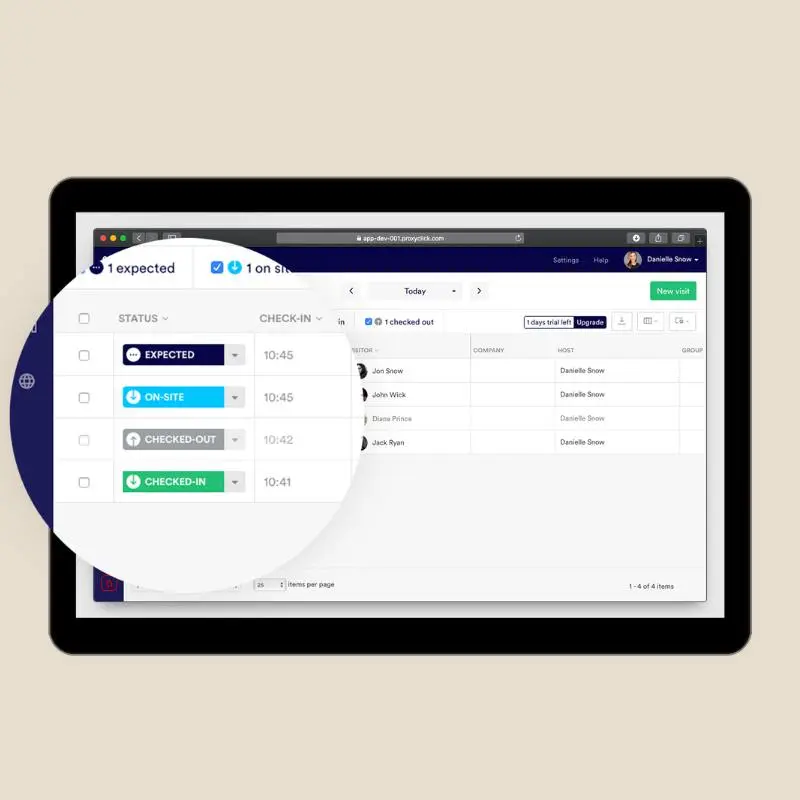
1. Electronic visitor management system
The product referred to here is the digital version of the traditional sign-in books. Visitors or receptionists key visitor details into the system upon visitors’ arrival, and then manually print out their visitor badges for access control.
An electronic visitor management system can be more gdpr-friendly, but the manual processes have not been removed.
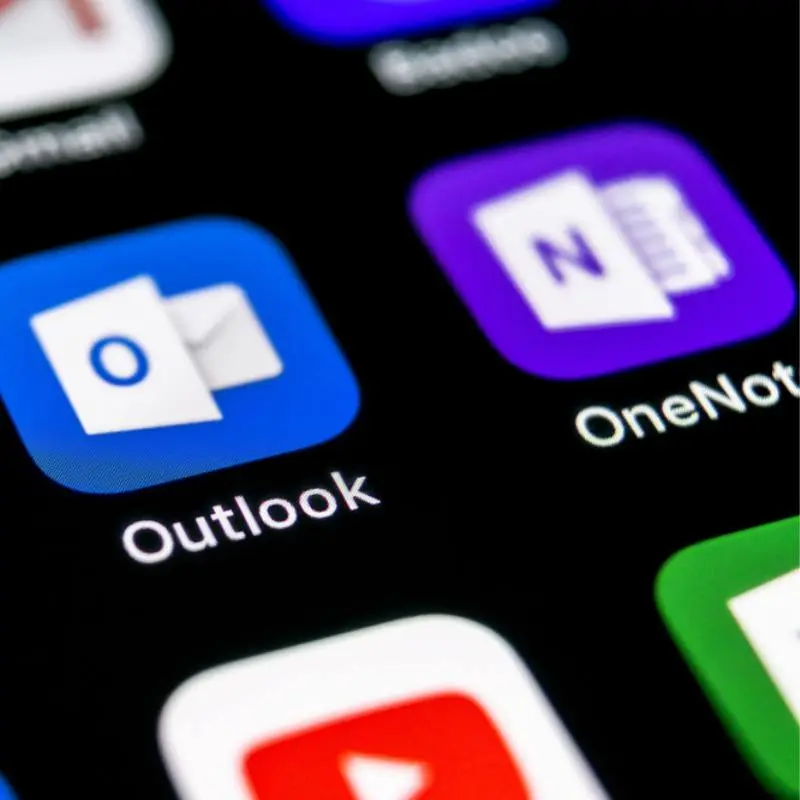
2. SaaS subscription & Software only
These software-only packages can be installed on tablets, iPads, and smartphones, and usually offer users a free trial. These systems allow for the same basic automation as the electric VMS, but with added benefits from a wider array of features and integration options.
However, visitor management hardware is key to maximising efficiency for businesses and boosting user experience. The software on its own doesn’t provide much utility without the hardware that allows people to interact with it. If we look at the current market offerings for these SaaS solutions, they are:
- Software only (hardware not included)
- iPad/app variants
- Non-integrated kiosks
Read more about why we think an iPad is not efficient and sacrifices the visitor experience
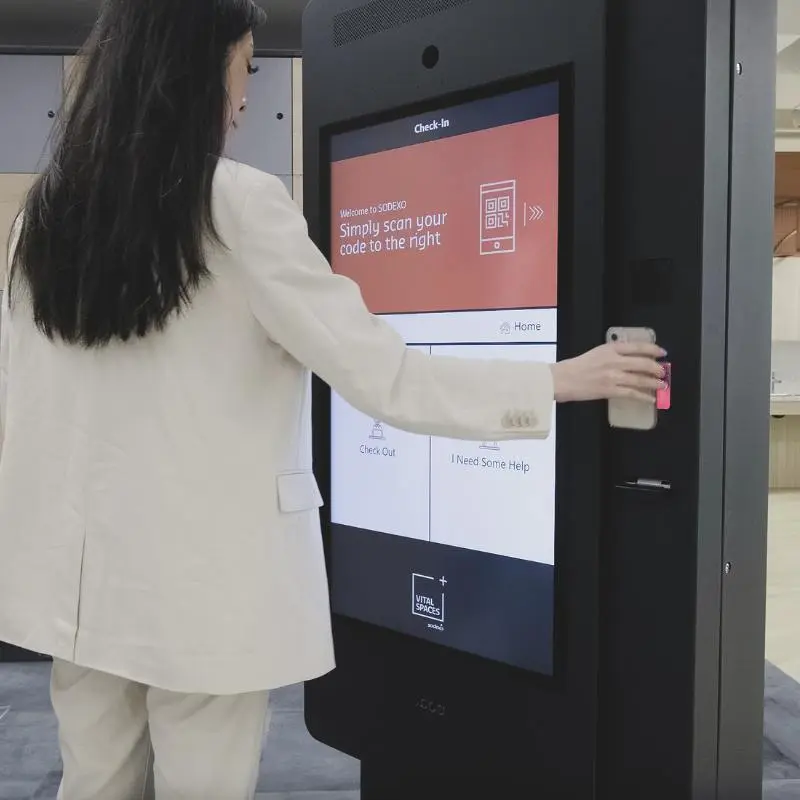
3. All-In-One Visitor Management System
Including software and hardware as a whole package (usually with the kiosk provided), these modern visitor management systems not only digitise visitor information and records but also feature an open API for integration with other workplace management systems. For example, they integrate with access control systems, meeting room and desk booking, and wayfinding solutions, and they are designed to be fully customised.
Because modern visitor management systems are adaptable to any workflow and software integration, they make for a durable solution that can scale and grow with the organisation’s changing needs.
Modern visitor management systems extend their functionality beyond visitor check-in. Some iconic features include branded meeting invites, host notification, visitor pre-registration, video calls to a virtual receptionist, catering, handling deliveries, and more.
Key features for modern Visitor Management Systems
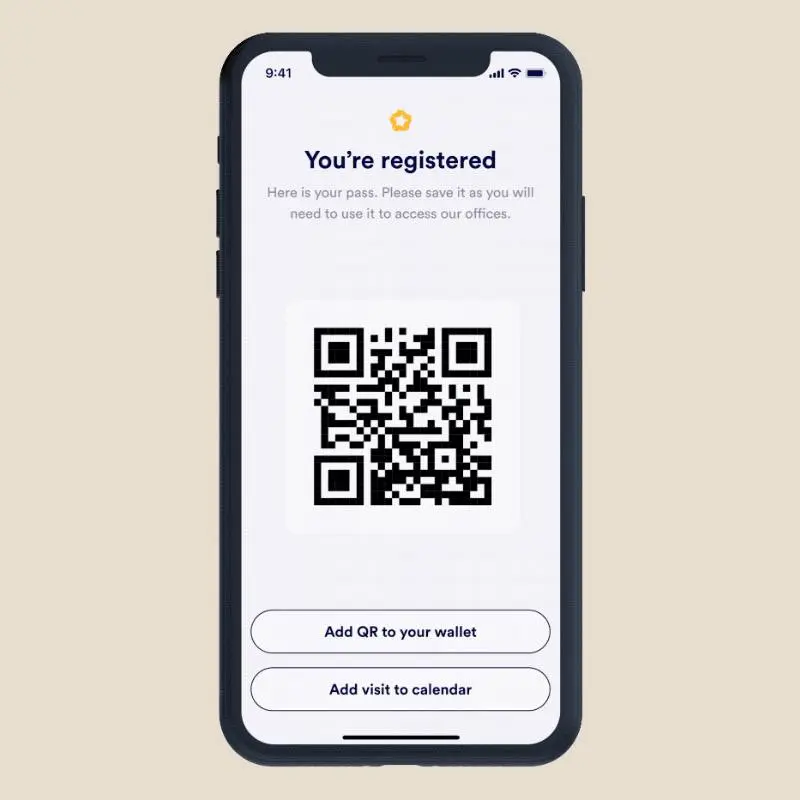
1. Pre-registration (pre-sign documents)
Save time at check-in by allowing visitors to sign important documents and pre-register before arrival. Visitors receive a branded email invite with useful information and a link to pre-registration, making sure that their visit can be as smooth and comfortable as possible.
2. Customised check-in for different types of visitors
Different information is needed from different visitors, e.g., someone coming to visit a family member would need to share whom they’re visiting and be asked to complete a photo capture for security, couriers can enter their company name and delivery reference, while external partners enter their host’s name and time of the meeting,
3. Customisable access methods
Modern visitor management systems should allow for multiple access methods that can integrate with access control. You can send visitors a unique QR code ahead of arrival, reducing check-in times to mere seconds as guests simply scan the code; or, if your workplace prefers physical visitor badges, you can customise these to fit your brand and enable the system to automatically print the badge upon check-in. Alternatively, you can use RFID or PIN codes – whatever fits best at your workplace.
More on access management here
4. Automatic host notifications
The system automatically notifies the hosts when their visitors complete check-in. This can be set up through SMS, email, push notification or other modes of texting used at your workplace. The host can then send direct communication back, informing visitors of any delays or changes, or they can head straight to the reception area to greet their guests.
5. Integration options
It’s worth considering the benefits of integrating visitor management with other workplace systems. Instead of having employees constantly check 4 separate systems to carry out simple tasks, open software allows you to simplify more than just visitor management all at once.
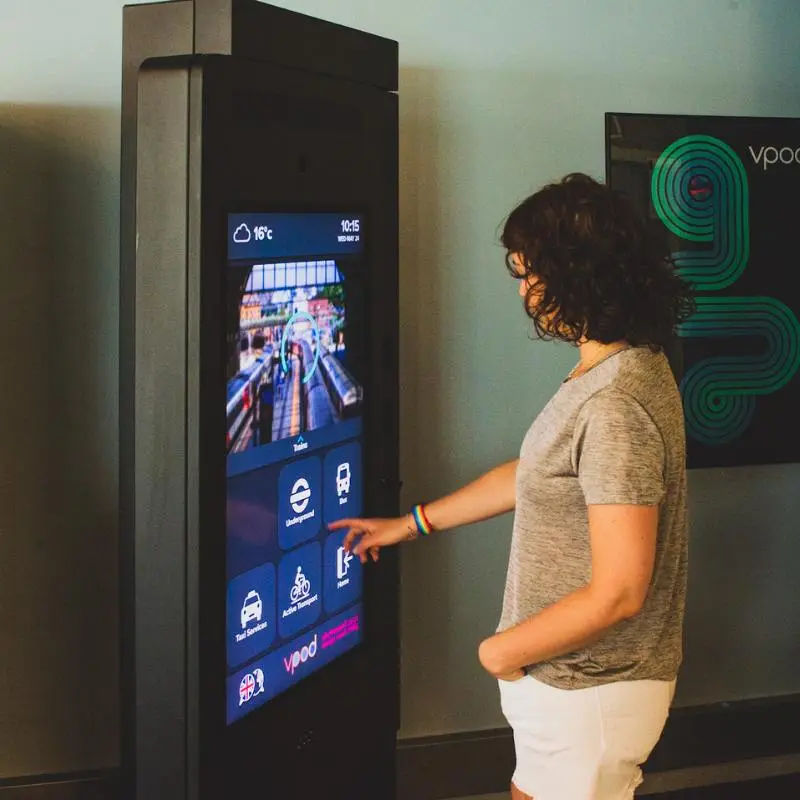
6. Customisable UI and UX
Great VMS gives you the ability to use your brand and company voice to enhance the user experience (UX). Customise the user interface (UI) to fit the needs of your company and your visitors, making a great personalised first impression.
7. Data insights
Improve organisational functions with detailed visitor reports that allow you to better understand your workplace. Details on peak traffic, visitor types, and daily check-ins are updated in real-time and help keep security teams and receptionists up to date on data trends.

8. Scalability
Running visitor management from a centralised cloud-based platform allows for global scalability across multiple locations along with remote management. For large organisations with multiple international locations, this means that employees can move from one place to another with ease, while global managers can monitor activity across all locations. Cloud-based software can be continuously updated to improve and adapt functionalities for a future-proof workplace.
We discussed these key features in more depth in this blog about 8 Key Considerations to Enhance Visitor Management Experience.
What are the benefits of modern Visitor Management Systems?
We have discussed the benefits of a visitor management system in detail, so here are the key benefits that we summarised based on research and the valuable feedback from our customers – Supporting the front desk staff to deliver more personalised customer service, enhancing security, cost reduction, and improving efficiency.
1. Support the front desk staff to deliver more personalised customer service
Are self-service kiosks supplementing or substituting face-to-face human interaction? Visitor management systems can be easily perceived as a device requiring ‘no human interaction’ that leaves visitors to help themselves.
However, removing the majority of repetitive tasks with smart technology can repurpose the reception team from behind the desk to delivering a concierge-style service. The staff is empowered to better support customers and bring value to the reception area which, in turn, “increase[s] productivity in a big way”.
What first impression is your reception making?

2. Enhancing workplace security
Verify and track every visitor in your building
Workplaces can face several security threats such as:
- Strangers or unexpected people gain entrance to the building.
- Lack of identification and motives of strangers.
- Unawareness about which employees are in the office or might have had a change of heart and decided to work from home.
With real-time insight into the building’s safety, visitor management systems automate the process of visitor registration and identity verification to ensure the highest standard of office security. All data is logged and accessible as digital reports for audit purposes. In case of an emergency, updated visitor data can be recalled to check how many people are in the building and where they are.
Integration with access control systems
Integrating office access control is considered to be one of the cornerstones in turning office spaces into safer and smarter offices. The technology can tailor or accommodate any company security policy, from the pass being upgraded to also allowing visitor access control through any global or national barrier system. The Facilities Manager now knows who has checked in and controls the visitor entry.
The 5 key reasons that you should integrate visitor management systems with access control systems are:
- To customise your visitor’s access level
- Digitally track your visitors
- 24/7 Building Security
- Efficient background operation
- Integrate with market-leading access control systems
Read more about the Visitor Management System’s access control feature
3. Cost reduction
The cost reduction of a visitor management system is measured by looking at the cost of implementation and subscription against the money saved on administrative costs, labour costs, and the upkeep of legacy applications.
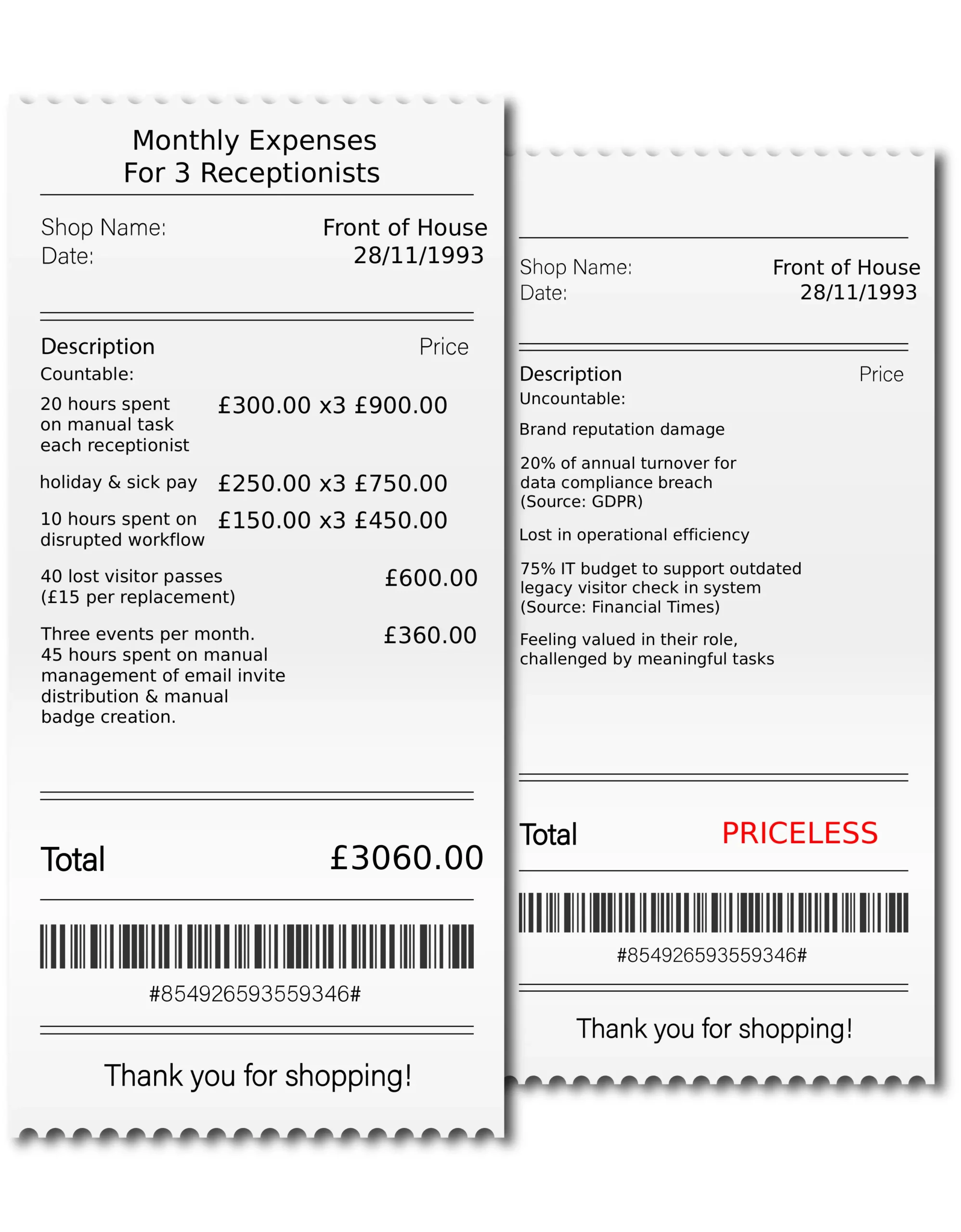
Reduced daily administrative cost
Administrative costs are the hours you’ve paid your receptionists to do the manual jobs that take up their time from other more valuable tasks. We calculated the numbers with a reception team of 3 receptionists, checking 200 visitors in a month, and the total cost comes to £3,060/month for work that could be done much more efficiently.
The workload includes manual check-ins, data collection, badge printing, event management, and more. By upgrading your visitor management process, you can utilise your resources and staff for more high-value work – saving money and improving productivity, all while guaranteeing consistent customer service.
Reduced labour costs
When the manual tasks are removed, you eliminate the need to over-staff your reception in anticipation of high-traffic periods, which saves labour costs and improves efficiency. In the meantime, you can repurpose your receptionists to other areas of the business that brings more value.
Save on up-keep of legacy applications
If you depend on a legacy system for visitor management, you are likely spending large sums of money supporting, maintaining, and implementing that legacy software. By using cloud-based visitor management software that can be remotely updated and maintained continuously, you can reduce a significant amount of cost in subsequent years.
4. Improve Efficiency
To best introduce the efficiency a visitor management system can bring, we’ll cover three concepts: On-grid and Off-grid, and the measurement of digital efficiency.
The concept of On-grid and Off-grid
A “connected workplace” is key to delivering the best efficiency in the workplace – where different systems exchange data to enhance the experience or make processes more efficient. It is a simple but significant concept: On-grid is when systems are linked and connected whereas Off-grid is where some systems are implemented; however, processes, are largely manual and costly.
The so-called ‘open API’ in technical terms enables the systems to exchange data with any software/system, which has a large impact on your workplace efficiency and is key to achieving an On-grid visitor management process. It means there’s no limitation with what systems you want to integrate with or what workflow you want to set up.
Is your visitor management system Off-Grid?
With Off-Grid visitor management, here is what could happen:
- An employee schedules a meeting in Microsoft Outlook or another meeting scheduling system, but the data sits there serving no real purpose, except for the meeting attendees, who may not know how to get to the building or how to access the meeting room.
- It takes more manual processes to ensure the reception is aware of some of the visitors they are expecting.
- The reception team are largely reactive to visitors and has manual processes passing information from one system to another.
In a connected workplace, visitor management systems integrate with any building systems, including Microsoft Outlook, wayfinding, and Room and Desk booking. Each system informs the other, making the workplace intuitive, informed, and intelligent.

The concept of Digital Efficiency
We published a free digital efficiency calculator tool to measure the involvement of manual processes and parts of workflows that require multiple touches.
Digital efficiency is not just about getting the latest technology; it’s about embracing a solution that can help the organisation constantly adapt and evolve in an ever-changing marketplace. We encourage you to challenge your workflow step, process, and data source.
What’s the visitor management system’s price?
The price of a visitor management system on the market sits from £20 to more than £1000 a month, depending on if it’s a simple SaaS subscription or with hardware included, the product’s customisation, and more.
With Vodafone achieving a return on investment of £80k in year 1 and £175k in year 2 with a smart visitor management system, we advise looking at the Return on Investment that the solution will drive rather than looking for the cheapest offer in the market. Let us explain it in detail:
How to measure the ROI of visitor management solutions?
So, you’ve fully understood the benefits and impacts of visitor management solutions, but how do you present the ROI to convince your internal stakeholders to buy in?
When it comes to technology, the ROI goes beyond comparing and measuring the cost and profit – instead, it’s crucial to consider how it can evaluate both quality and quantity of service and internal functionalities.
Read an in-depth guide on how to calculate each ROI for visitor management software
1. Measure and compare the tangible ROI
The tangible ROI can be measured by looking at the cost of visitor management software against the money that can be saved. The savings include:
- Reduced daily administrative costs
- Improved compliance procedures
- Increased digital efficiency
- Less expensive up-keep of legacy systems
2. The intangible ROI that drives the long-term success
Besides monetary benefits, it’s important to take an approach that is not solely number-driven or quantitative, but instead, include the human-centric and qualitative – the intangible ROI that relates directly to the people driving the business.
The intangible ROI is what drives the long-term success of your business. This includes:
- Improving internal communication and feedback loops.
- Letting employees focus on their area of expertise instead of simple administrative tasks
- Creating a comfortable work environment where employees feel safe.
- Staying competitive.
- Data that gives you a better understanding of how to establish a human-centric workplace.
The right solutions help improve processes and workplace culture, resulting in higher job satisfaction and lower turnover rates, which in turn strengthens brand perception and leads to long-term sustainable growth.
How to choose the most suitable Visitor Management System for your space?
1. Identify your key challenges
No two workplaces have the same culture, so the best solution will depend on what challenges you need the visitor management to solve. Therefore, the first step should be to identify these challenges. Try to walk through the process, from the customer journey to the employee experience, watch how people use your building and question them about what can be improved.
2. Prioritise the solution’s integration and adaptability
The new technology you are looking into should adapt to your workplace, not the other way around. It should make lives easier for both employees and visitors. Integrating with any software is crucial for visitor management systems, as it can maximise the value of the innovation you brought into the workplace and lead to higher employee productivity. The top 5 software we recommend for integration is wayfinding, room and desk booking, intelligent lockers or smart locks, access control systems, and data reporting.
Once you’ve decided what challenges you need to solve and the software you want to integrate with, you can evaluate and compare how easy it is for each vendor to meet your requirements.
3. Talk to a workplace consultant
If you still feel stuck looking for smart solutions because you lack industry expertise, one option is to look for a workplace consultant who can help solve your unique challenges. For guidance and expert advice, you can always talk with Vpod’s consultants to see if we can help you find the right solutions.
How to convince internal stakeholders to invest in Visitor Management?
There are three key points to remember when trying to gain buy-in to an idea or project.
1. Bring your stakeholders in the loop early
One of the most helpful things you can do to encourage stakeholder buy-in is to involve them early on with the project. Allow your stakeholders to familiarise themselves with your project aims and the solutions you are exploring.
2. Listen to concerns
A short stakeholder workshop is an effective way to hear out any concerns or worries that they may have before the project gains traction. During the session, you can answer questions and concerns, or take notes and get back to them afterwards. Your stakeholders will appreciate the chance to give their input before you go ahead with the project.
3. Communicate
Keep your stakeholders up to date throughout the process. How influential they are to your project will define how often you’ll be in contact; whether it’s a daily update in a scrum, a weekly phone call, or an email update, be sure to communicate at an appropriate level.
Vgreet Digital Visitor Management System
Vgreet Virtual Reception is a cloud-based visitor management solution that connects siloed systems, integrates with any software, checks in visitors and employees, handles deliveries, and more.
With our global partner network, our visitor management system is available for customers in the UK, US, EU, and Asia.
Contact us
